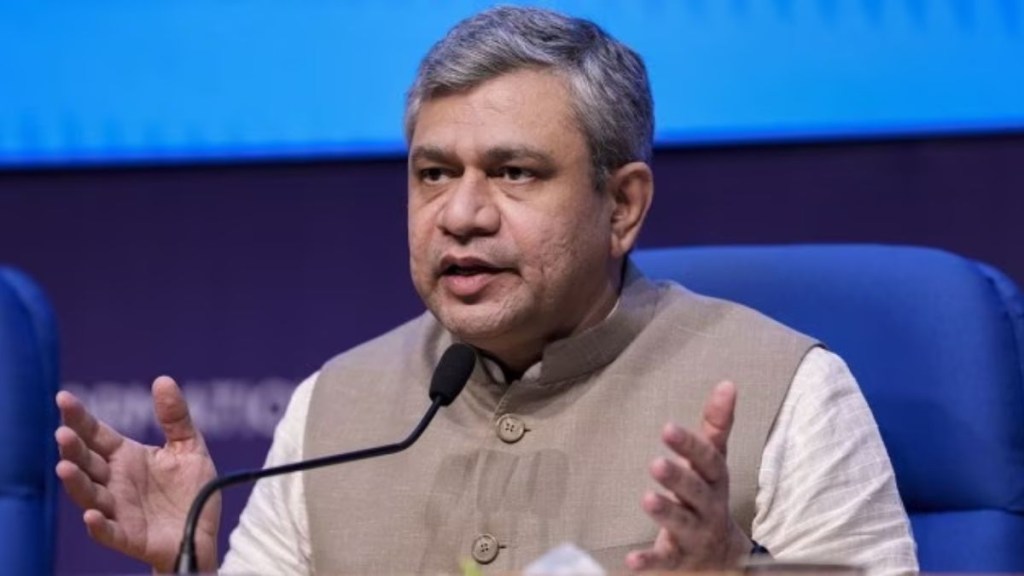Railway Minister Ashwini Vaishnaw on Saturday (March 2) listed out the transformational initiatives taken by the Railways in the last 10 years of the Narendra Modi government. Vaishnaw said that the construction of the world’s highest railway bridge – the Chenab bridge, and the development of the first under-river water tunnel for the Kolkata metro are some of the notable technological advancements in the rail sector.
Vaishnaw also highlighted the commencement of construction for India’s inaugural undersea tunnel connecting Mumbai and Thane as a component of the ongoing Bullet train initiative. He noted that only approximately five countries worldwide possess the requisite technology for such endeavors. The proposed 21-km-long tunnel, spanning between Mumbai and Thane, will encompass a 9.7-km stretch traversing beneath the sea, situated 54 meters below its surface.
“Today, railway stations are very different from what they were 10 years back. Stations and trains are cleaner and every train has a bio-toilet,” he said.
Indian Railways expands track capacity, introduced Kavach
Regarding track capacity expansion, he informed that last year, railways added 5,200 kilometers of new track. This year, railways will add 5,500 kilometers of new track. It’s akin to integrating Switzerland’s size into the country annually. “That’s the pace at which progress is being made,” he said. In delineating safety measures for passengers, Vaishnaw noted that over the past decade, more than Rs 1.27 lakh crore has been allocated for passenger safety, with nearly 7,000 kilometers of worn-out tracks replaced each year.
He emphasised the functionalities of the Automatic Train Protection (ATP) system, Kavach, currently being rolled out across India’s railway network. He mentioned that while other countries began implementing ATP systems in the 1980s, past Indian governments did not prioritize this critical passenger safety feature.
Indian Railways gives ‘55 per cent discount to every passenger’
Vaishnaw also discussed the fare structure of the Railways and its accessibility to the general public. He explained, We transport approximately 7 billion passengers annually, practically 25 million each day. Our fare structure ensures that if the cost of transporting a person is Rs 100, we charge only Rs 45, providing an average discount of 55% to every railway passenger.
Regarding affordability, the minister highlighted the introduction of Amrit Bharat, a world-class train offering 1,000 km of travel for just Rs 454. “This exemplifies the level of affordability we strive to provide,” he added.
Indian Railways to manufacture over 1,000 Amrit Bharat trains soon
Vaishnaw further announced plans for India to manufacture at least 1,000 new-generation Amrit Bharat trains in the coming years. He also mentioned ongoing efforts to develop trains capable of running at speeds of 250 kmph.
He further mentioned that the Railways has initiated efforts towards exporting Vande Bharat trains, with the first export anticipated within the next five years.
400 to 500 Vande Bharat Express trains in few years
As per the railway minister, the incorporation of new technology has rendered trains like Vande Bharat immensely popular among the younger demographic. “Practically, every week one Vande Bharat train is getting inducted in the fleet. We will be manufacturing at least 400 to 500 of these trains in the coming few years itself,” Vaishnaw said.
Vaishaw provides total annual expenditures of Indian Railways
Vaishnaw detailed the annual expenditures of the Railways, stating that allocations for pensions, salaries, energy bills, and lease-interest payments amount to Rs 55,000 crore, Rs 97,000 crore, Rs 40,000 crore, and Rs 32,000 crore, respectively.
Additionally, approximately Rs 12,000 crore is dedicated to maintenance, totaling to around Rs 2.40 lakh crore. “We have been able to meet all these expenses because the team has been working very hard under the prime minister’s guidance,” Vaishnaw said.
